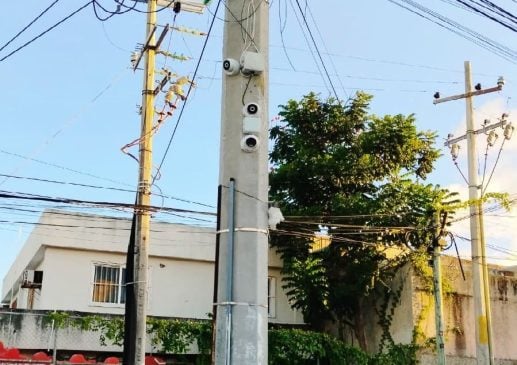Riviera Maya, Q.R. — The Quintana Roo state government is developing a strategic connectivity project for the conservation of wildlife. The project will include 21 wildlife crossings, 15 of which will be overpasses. The project is expected to begin this month.
The program focuses on protecting wildlife along federal 307 highway by building 21 wildlife crossings, including 15 elevated, two zipline and four underground with the goal of protecting endangered species.
The ambitious project is being done in collaboration with the Secretariat of Ecology and Environment (Sema) and the Institute of Biodiversity and Protected Natural Areas (Ibanqroo).
Technical studies have been carried out for this project along federal 307 highway between Cancun and Tulum. According to Oscar Rébora, the head of Secretaría de Ecología y Medio Ambiente (Sema), the wildlife crossing will ensure the protection of various species in Quintana Roo.
Since March 2023, through Sema and together with the Ministry of Finance and Planning (Sefiplan), the Biodiversidad y Áreas Naturales Protegidas (Ibanqroo) the Ministry of Public Works (Seop) and in coordination with the El Edén Ecological Reserve AC, work has been carried out on the studies for the project.
Sefiplan (Secretaría de Finanzas y Planeación) has established a trust fund to support programs and projects for the conservation of biodiversity in the State of Quintana Roo.
Eugenio Segura, Senator for Quintana Roo, reported that when he was in charge of Sefiplan, the wildlife crossing project was promoted. The main objective of the fund will be to provide the necessary resources to transform the state’s roads and highways into infrastructures that are friendly to the environment.
He says an initial budget of 15 million pesos has been allocated for the first phase, with the start of the project scheduled for the fourth quarter of 2024.
According to studies by specialists, in this section between Cancun and Tulum which includes the Xcacel-Xcacelito area and the Yum Balam and Sian Kaan Biological Corridor, sightings of specimens of hocofaisan, ocellated turkey, jaguarundi, ocelot, ocelot, jaguar, puma, spider monkey, old man’s head, striped skunk, tamandua, striped spiny iguana, porcupine, white-tailed deer and collared peccary, among others, have been recorded.
This project is of utmost importance as it will be located in the RAMSAR site, a wetland of international importance as it is a spawning ground for sea turtles and a crucial mating area for jaguars.


